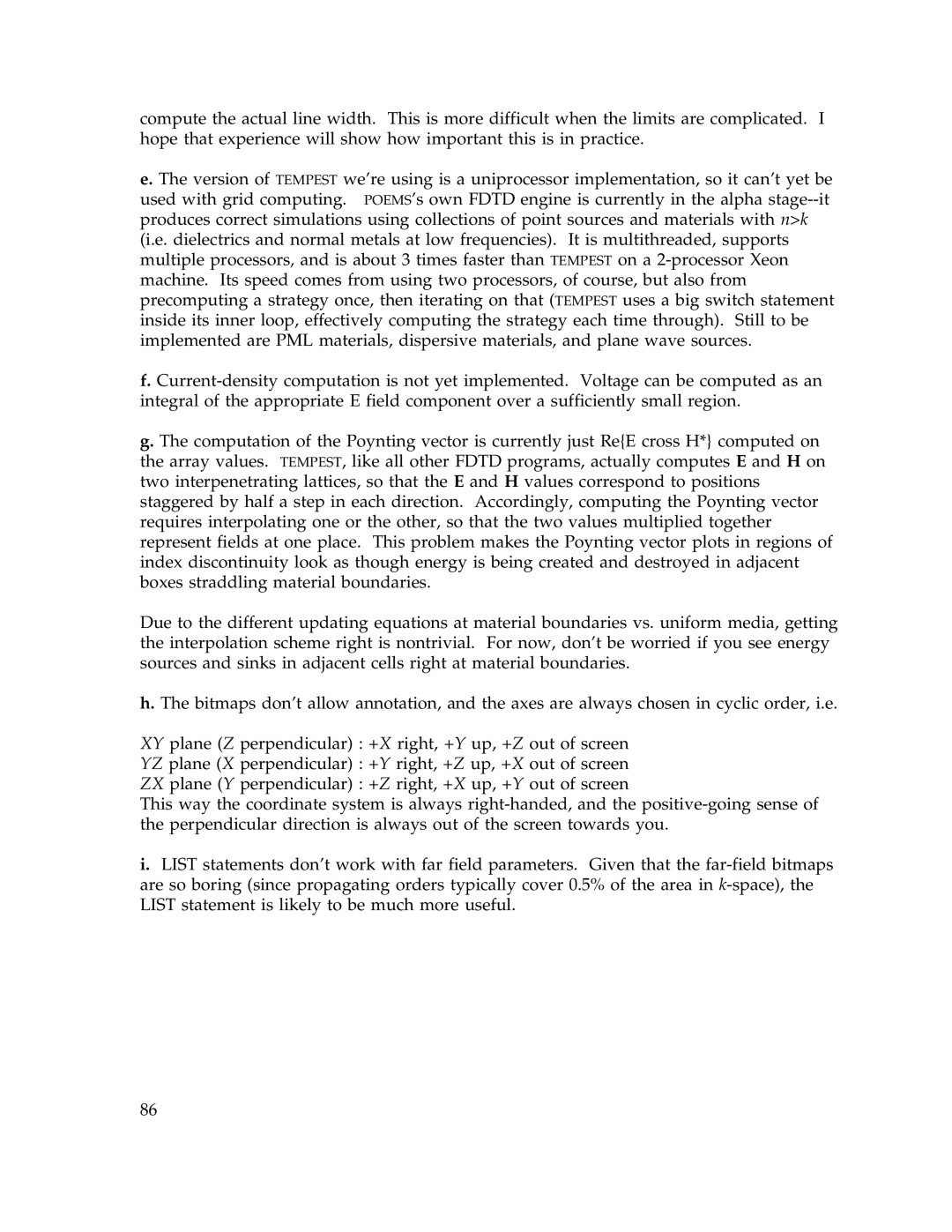compute the actual line width. This is more difficult when the limits are complicated. I hope that experience will show how important this is in practice.
e. The version of TEMPEST we’re using is a uniprocessor implementation, so it can’t yet be used with grid computing. POEMS’s own FDTD engine is currently in the alpha
f.
g. The computation of the Poynting vector is currently just Re{E cross H*} computed on the array values. TEMPEST, like all other FDTD programs, actually computes E and H on two interpenetrating lattices, so that the E and H values correspond to positions staggered by half a step in each direction. Accordingly, computing the Poynting vector requires interpolating one or the other, so that the two values multiplied together represent fields at one place. This problem makes the Poynting vector plots in regions of index discontinuity look as though energy is being created and destroyed in adjacent boxes straddling material boundaries.
Due to the different updating equations at material boundaries vs. uniform media, getting the interpolation scheme right is nontrivial. For now, don’t be worried if you see energy sources and sinks in adjacent cells right at material boundaries.
h. The bitmaps don’t allow annotation, and the axes are always chosen in cyclic order, i.e.
XY plane (Z perpendicular) : +X right, +Y up, +Z out of screen
YZ plane (X perpendicular) : +Y right, +Z up, +X out of screen
ZX plane (Y perpendicular) : +Z right, +X up, +Y out of screen
This way the coordinate system is always
i.LIST statements don’t work with far field parameters. Given that the
86
